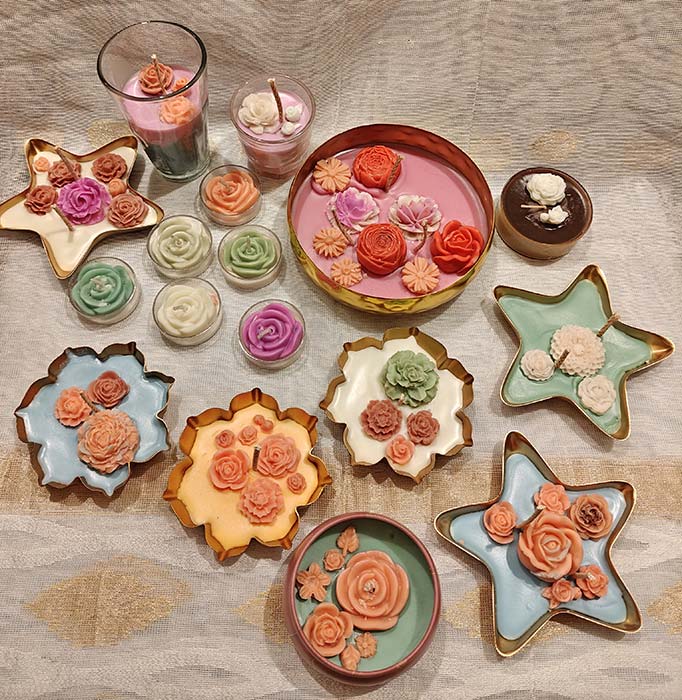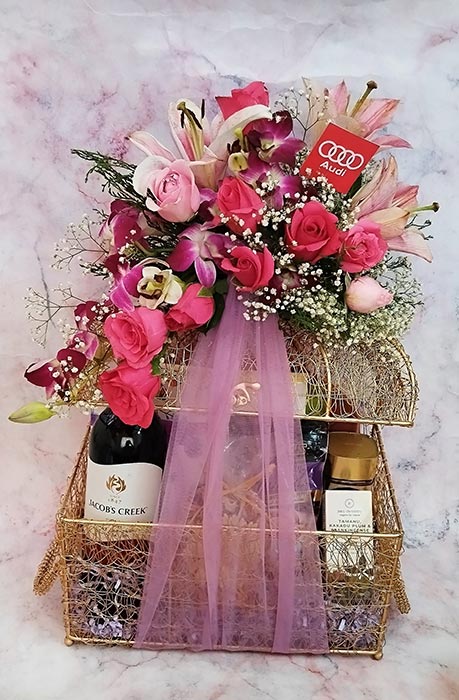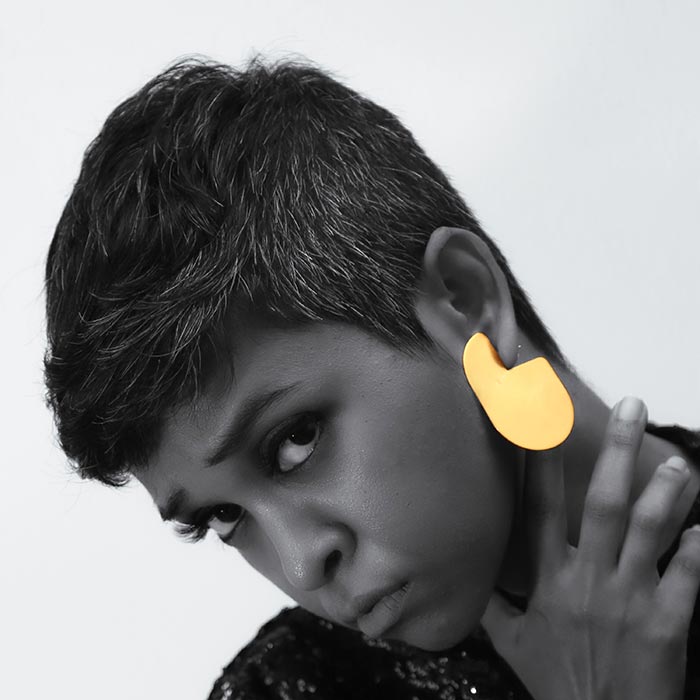
Tirunelveli-based No Na Me creates androgynous, modular, statement jewellery that celebrates individuality. With bold, gender-neutral designs, the brand aims to push the boundaries of wearable art, offering minimal yet timeless pieces.
A vision for all ages
Smruti Mathisekaran, the founder of No Na Mé, had always wanted to start a brand of her own. Initially wanting to design furniture, the cons outweighed the pros—expenses, transportation, and storage turned out to be much higher than anticipated. Holding degrees in Civil Engineering and Interior Design, she decided to design wearable art that can move with the wearer. Jewellery felt like the most logical idea to put her skills to use. She established a niche brand with no prior business knowledge and has carved out a position for her statement jewellery in the market since 2020. She handles designing and oversees manufacturing, while her key team, Santhi, manages the inventory, accounting, and data work.
Not having a background in jewellery design gave her an edge; she could utilise her architecture and design expertise to create unique pieces. She went with a modular concept—jewellery with individual components that can be interchanged to create new designs. The initial days were hard, Smruti admits. “The first three and a half years were a struggle. People found the jewellery unique, which was good, but also a problem. They needed to see it on people to visualise it and gain the confidence to carry it off. Over the last two years, we’ve started doing pop-ups. As people see me wear the necklaces, rings, or earrings, they get a better idea of how to style them. The brand is a big hit with architects and designers; we just had to convince other people that they should try our jewellery.” With the foundation set, Smruti had to shape its identity. She chose to do it in an uncommon way.
Owning a no-name brand
The name No Na Mé is inspired by wanting to be a no-name brand. “I didn’t want a name to influence the brand and its potential connotations. The name, to me, symbolises being whatever you want to be as time goes by. No stereotypes. No names. No tags.” Smruti hopes that people who wear a piece of No Na Mé feel empowered. She mentions how the brand has piqued an interest among men who have never considered wearing jewellery. With gender-neutral designs and aesthetics, the brand celebrates individuality and inclusivity.
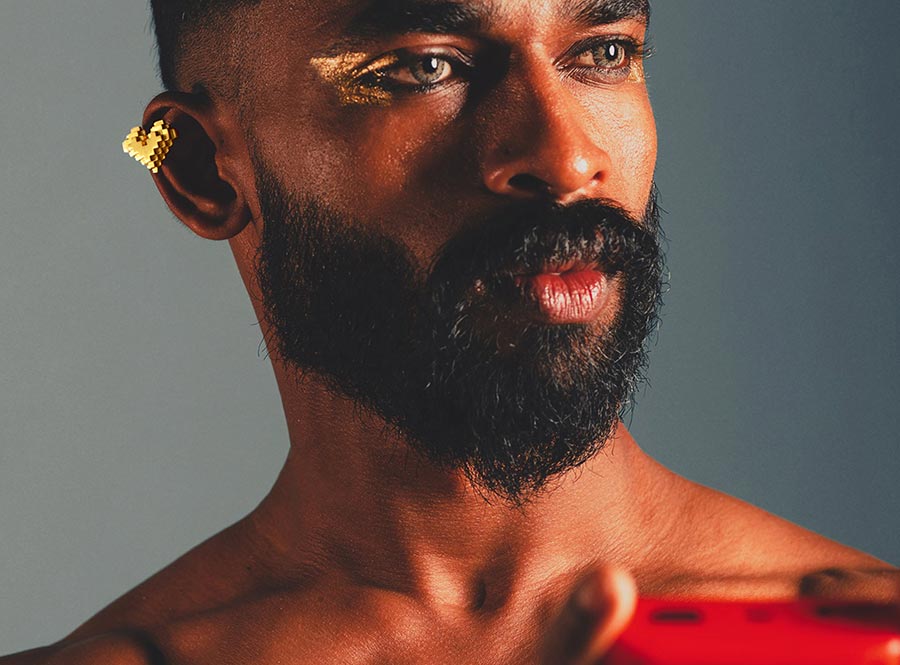
Pushing design boundaries
On the topic of designing, Smruti laughs, “I can’t draw, I can’t sketch, which is why my designs are so minimal. I use simple, precise geometry. Balancing timelessness with modernity is quite straightforward for me. The sheer simplicity of the pieces, using circles and bars with leather as the anchor, automatically makes them classic and versatile—less ornamentation, more functionality. We aim to evoke nostalgia through our jewellery while remaining contemporary. Initially, I was creating things that I liked, and soon enough, I realised I had to design keeping potential customers in mind. I had to make at least a couple of commercial designs. Our 8-bit collection was created after a lot of research and in collaboration with Lakshaya, who interned with me at the time. Since she loved video games, we drew inspiration from the pixelated hearts that symbolize life in gaming. Hearts are always a bestseller, but I wanted to move beyond the cliché, and this playful reinterpretation has become our bestselling collection so far.”
Walking through the process of designing a product from start to finish, she shares, “We do thorough research before releasing a new collection. Although we don’t follow trends, we have to stay updated on the current market scene. After brainstorming sessions and sketches, or doodles, more like it, we begin prototyping. Every piece of jewellery has at least 50-100 3D-printed samples before we finalise the design to send to our manufacturers. Due to our modular model, we don’t have to worry about a minimum order quantity. We mix and match materials from what we get to create something distinctive every time.”
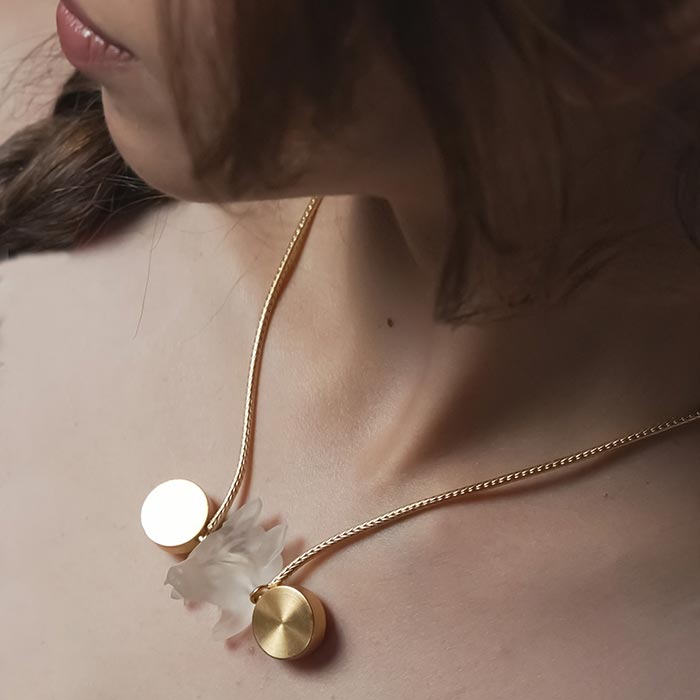
Crafting with creativity
The choice of materials ultimately came down to costs and convenience. Brass is the main element of No Na Mé’s pieces, plated in gold. Smruti chose leather for its unconventionality. It’s rarely used in jewellery, but she hoped it would persuade men to wear it, which it did. The jewellery components are sourced from across India: wood from Tirunelveli, where the brand is based, leather and machined pieces from Mumbai, and handmade or cast pieces from Jaipur. She also uses stainless steel for its tensile strength.
Marketing an experimental brand in a world of mass production challenges her in interesting ways, Smruti says. “Our products are mindfully and thoughtfully designed. Simple designs are not necessarily bad. We have a mix of handmade and machine-made pieces, which adds to the appeal. With fast fashion, the focus is on saleability and trends. With No Na Mé, however, there is the aspect of multifunctionality because of the modular components. We essentially provide fewer products that can be used in multiple ways. I like to believe it’s our way of counteracting consumerism,” she smiles. Her commitment to the brand has given way to unforgettable anecdotes.
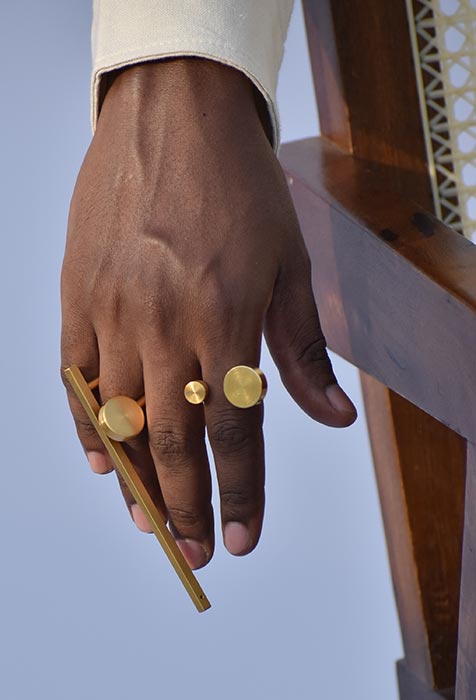
Going beyond adornment
When asked about her most memorable customer story, Smruti lights up. “There was a client who, at a pub, saw a man wearing a ring. Before he could ask him about it, he had left. He incessantly googled keywords until he found our brand. Our jewellery is gold flash-plated, so it can’t be worn daily or exposed to water. He wanted a ring to wear daily, so I did a custom higher gold plating for him. The twist is, the ring was stolen from him twice! He has gotten the same ring made three times from us now, and his passion really cemented in my mind how well the brand is doing.” Looking back on the journey, she sees every roadblock as a stepping stone.
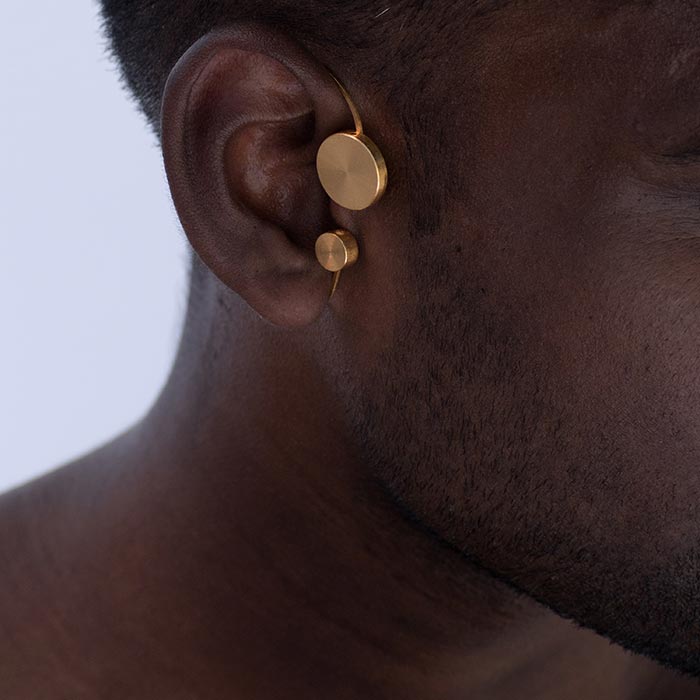
Little victories go a long way
For Smruti, the toughest challenge was striking a work-life balance. “Having your family try to understand your unending work hours, stretching into the weekends and having your business take over your life is hard. The initial years, especially, were the most demanding, as I had just had a daughter. What makes it all worth it is the small wins. A review here, a comment there; they give you the confidence to keep going.”
Reflecting on the sense of purpose she has every morning, she emphasises, “Seeing the prototypes 3D printed gives me immense joy. We experiment with so many new and avant-garde concepts, so seeing an idea come to life is the most exciting part of my day.”
Casting a mark
The biggest lesson Smruti wants to pass on to aspiring entrepreneurs is: gain some experience before starting your own venture. Do some internships, learn how to run a business, or shadow someone who owns one. Having a mentor or guide will make it easier to grasp the know-how of business. The second piece of advice she has is to have your own voice, even if you have to settle on occasion. For her, personally, she had to compromise on the product photos. “They used to be artistic and editorial in the beginning, but I had to acknowledge eventually that the photos looked like they belonged in a museum, making the brand look aspirational. They didn’t cater to people; they had to be convinced that they could actually wear the jewellery. I decided to be precise with the design, but natural with the presentation. That was a real turning point for the brand.”
Smruti dreams of opening a flagship store. She hopes to see her jewellery represented on a runway or in a fashion show and become a global name in jewellery design. No Na Mé has won several awards, like IBDA (India’s Best Design Award) 2020 and 2021, the Lexus Design Award in 2022, and an award at Lakmé Fashion Week in 2023.


